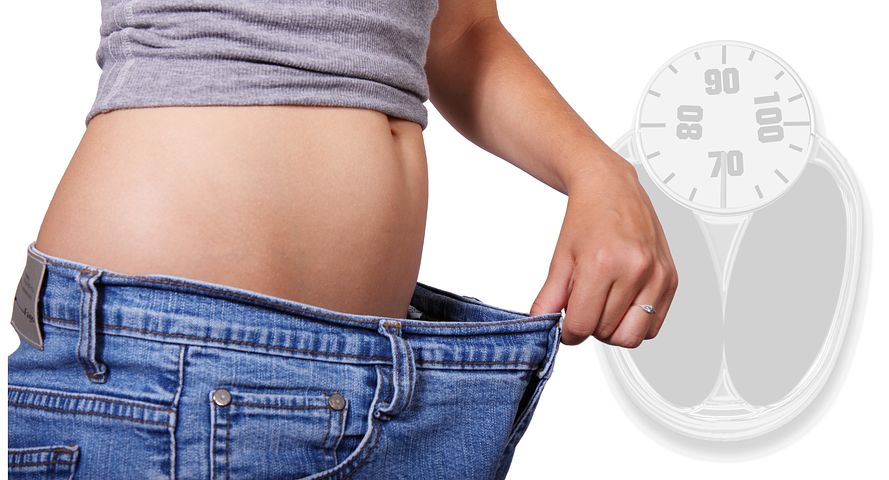This site is reader-supported, and we earn commissions when you purchase products from retailers after clicking a link on our site. We earn money as an Amazon Associate on qualifying purchases.
The keto diet is restrictive and, like most diets, can be challenging to stick to day in and day out. Whether you’re just starting out and craving your favourite carby treat, or you’ve been at it for months and looking for a change,
You may be thinking about relaxing your restrictions and wondering how to go about it.
Taking regular breaks from your diet will make it easier to enjoy and will help you adapt to the keto diet. How often should you take a break from keto? Find out why you should take keto breaks and how to do it the right way.
Why You Should Take Breaks From Keto
Ketosis, which can be achieved through the keto diet or fasting, has many health benefits. The most common is weight loss. Other benefits include reduced inflammation, stable blood sugar, increased antioxidants, appetite suppression, and more. However, ketosis can also have some drawbacks.

Ketosis feels great at first despite some temporary side effects, but it can also cause hormonal imbalances, a slow metabolism, and more. Here are some signs that you may need to take a break from ketosis.
Hormonal imbalance
Nutrient deficiencies, such as fiber, vitamins, and minerals on keto, can cause hormonal imbalance. This is why many people try keto supplements to supplement their diet. In one study, low-carb diets were found to lower testosterone and cortisol.
Don’t forget that carbs are also important. The keto diet is a low-carb diet, not a low-calorie diet. Make sure to eat carbohydrate-rich foods while staying within your daily carbohydrate limit.
Ketoacidose
Ketoacidosis occurs when there are high levels of both ketones and glucose in the blood. This can result in more acidic blood, which promotes oxidative stress. When you’re on keto, ketones rise and blood sugar levels drop, keeping ketosis at a healthy level. High levels of ketones are healthy and acceptable as long as blood sugar levels are low. But if you’re experiencing the opposite, it’s time to take a break.
Low thyroid and metabolism
Low thyroid can be due to chronic stress, malnutrition, undereating, and energy restriction. Going on the keto diet will lower your T3. You can increase it by eating carbs, which of course you can’t do with keto.
When you’re at risk for disease because of low metabolic function, it’s probably time to take a break.
Sleep deprivation
It’s common for most keto dieters to lose some sleep early in their journey. When you are in ketosis, the ketones provide fuel to your brain, reduce stress, and provide other neuroprotective effects. This is completely normal, but if you feel like it’s affecting your daily life, then it’s time to take a break.
What is carb and keto cycling?
Carb cycling is simply adding a day or two with more carbohydrates and then going back to your usual low-carb diet. When planning low-carb days, make sure to eat nutritious, good-quality carbohydrates, such as sweet potatoes, lentils, and whole grains, instead of junk food or sugary foods and drinks.
It is usually done by athletes and bodybuilders to prepare their bodies for exercise.
If you’ve been on the keto diet for a while and are keto-adapted, then carb cycling won’t bump you in and out of ketosis. if done right. Keto cycling is a form of carb cycling where your body goes in and out of ketosis for an extended period of time.
How often should you take a break from keto?
This will depend on your individual circumstances and your reasons for wanting to get away from it all. If you just want to expand your diet a bit or satisfy a craving, you can try starting with a cheat meal to see how your body responds. For carbohydrate cycling, the recommended pattern is generally five days of keto and then eating more carbs than normal for a few days. This should help you balance your hormones while continuing to lose weight. This pattern can be started after an initial 30 to 90 days of doing keto every day. Don’t start this until your ketosis levels are stable and you’re fat-adapted. Carb cycling can help prevent the side effects of ketosis, also known as the keto flu. Here are some symptoms of the keto flu:
- constipation
- leg cramps
- palpitations
- headache
- fatigue.
But if you’re planning on taking a break because of the keto flu, you can’t because you haven’t adjusted to the state of fat-burning ketosis yet. You may want to take an extended break from your keto diet if your weight loss has stalled or you’ve reached your goal weight. In this case, you can try keto for a week and see how you feel. If you take it easy and increase your carbohydrates gradually with nutritious whole foods, you can maintain your weight without much effort. You can even put it off for up to a month if you feel good. Do it right, and you can easily get back into ketosis with little effort when you’re ready.
How do you get back into ketosis after a break?
If you’ve taken too long a break from keto and kicked yourself out of ketosis, there are a few things you can try to help get you back into that fat-burning state.
Increase your electrolytes.
If you feel bad at the start of keto, it’s usually because of an electrolyte imbalance. As your body adjusts to the keto diet, you may feel tired, irritable, and nauseous. But you can combat it by adding a teaspoon of table salt to your water. You can also try sugar-free electrolytes! We’ve got the best keto electrolyte recommendations for you.
Stay hydrated
Since keto has a diuretic effect, it can be dehydrating, another symptom of the keto flu. In addition to fatigue and dizziness, thirst can give you a dry mouth. Instead of drinking the usual 8–10 glasses of water to stay hydrated, add at least two glasses as you are recovering from dehydration. There are plenty of other tips for getting into ketosis here.
Frequently Asked Questions: Keto Diet and Ketosis
Is the keto flu a sign to take a break?
If you’re new to the keto diet, you may experience flu-like symptoms as your body enters ketosis. Since you’re just getting started, don’t take a break. Remember that the keto flu is normal and temporary, so just keep going. You can try to recover from the flu by drinking more water and taking ketone supplements to boost your ketosis.
Are you more thirsty during ketosis?
The quick answer to this is yes. This is because glycogen stores are associated with water storage in the body. But do not worry. The thirst and perspiration you feel while in ketosis are quite normal. It’s also temporary. When the rest of the carbohydrates are released for energy before the fat is used for fuel, so does the water. And we all know that water loss can lead to dehydration and thirst. This is why you should drink more than the recommended fluid intake when you follow the keto diet. Learn more about ketosis and thirst!
Can I have dessert on keto?
Yes! You deserve to indulge in keto a little bit. Aside from using your recommended carbohydrate intake for dessert, you can also enjoy low-carb desserts. One of the most popular ingredients in keto desserts is whipped cream. You can make pudding, truffles, and even ice cream. Check out how to make keto desserts with homemade whipped cream.
Does intermittent fasting help with ketosis?
Many people contrast the keto diet with intermittent fasting. However, intermittent fasting can help with ketosis if done right. Intermittent fasting involves not eating for a certain part of your day, usually in the morning. Read more about the keto diet and intermittent fasting.
It’s okay to take a break from keto!
If you’ve been on the keto diet for months and your body just doesn’t feel right, it might be time to take a break. While the keto flu is normal and temporary, ketoacidosis is not. To avoid hormonal imbalance and other keto issues, try keto cycling. On the other hand, if you want to take a break from the keto diet just because you want to, try having a cheat meal instead. Be sure to start each carb cycle gradually, watch your sugar intake, and eat nutritious, whole foods to ensure you can get back into ketosis quickly when you’re ready.

